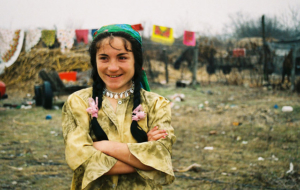8 Facts About Poverty Among the Roma Population in Romania

Out of the many ethnic minorities that live in Eastern Europe, the Roma population often faces discrimination. While progress has been made to limit this discrimination and better integrate the people, there has still been little success. Here are eight facts about poverty among the Roma population in Romania and what is being done to solve the problem.
8 Facts About Poverty Among the Roma Population in Romania
- Romania‘s Roma population consists of 2.5 million people out of a total population of 19 million. The Roma are the biggest ethnic minority in Romania and at least 90 percent live on or below the poverty line.
- Roma people often have trouble finding housing. The housing problem stems from cities like Bucharest not having enough housing for low income families. With the fall of the Soviet Union, many of the social housing programs that provided housing for the Roma went down with the communist regime, leaving many Roma homeless, especially in Bucharest. Many other Roma families that have lived in large cities have also found themselves being evicted due to unsanitary or unsafe conditions.
- Only one in five Roma children attend school. Poor financial situations and a lack of support leave Roma children malnourished, wearing dirty clothing and lacking school supplies, making them unfit to go to school, which contributes to the discrimination.
- Most Roma families live in homes without any drinking water or heating. In addition, half of Roma families live off of 3.3 euros per day. However, the Romanian government is taking steps to amend this issue by pushing forward a 100 million euro plan to better integrate the Roma community within the rest of the population and thus reduce poverty as a whole by 2020.
- The European Commission is making it their goal to better integrate the Roma community with the rest of the population by continuing a long term project that started in 2010. The program targets all Romanians in Europe works to solve issues with housing segregation, education levels, health improvement and general discrimination.
- The E.U. reportedly allocated 10 billion euros on regional development to be spent between 2014 and 2020 with a portion dedicated to assist the the Roma community. Despite this, the situation for the Roma community has yet to have any sufficient changes partially due to insufficient checks by the E.U. on how the Romanian government is using this money.
- Of the 10,000 or more street children that live in the Romanian capital Bucharest, about 80 percent of these children are Roma, which further contributes to discrimination. A lot of this is due to the overhaul of the social work and family advocacy systems with the fall of the Soviet Union and communist regime led to a poor or lacking systems that help homeless children and broken families in need of aid.
- There are programs at work that seem to be more efficient in leveling the playing field for the Roma community on a level playing field. The Fundația Secretariatul Romilor (FSR), after forming in 2009, has taken steps to help Romania’s Roma community by pushing an awareness campaign to bring outsider attention to the Roma situation, as well as improving the community’s public image through social inclusion programs. Despite doing their best to make headway, the government of Romania has shown resistance to some of their solutions, even with the FSR going as far as to work with NGOs.
These eight facts about poverty among the Roma population in Romania show how poverty seriously affects not just Roma in Romania, but in all of Eastern Europe. While it’s clear that outside influencers are seeking to improve the Roma situation, the main government within Romania seems resistant in solving the problem. With awareness, time and successful government programs, Romania can really help the Roma community.
– Collin Williams
Photo: Flickr
